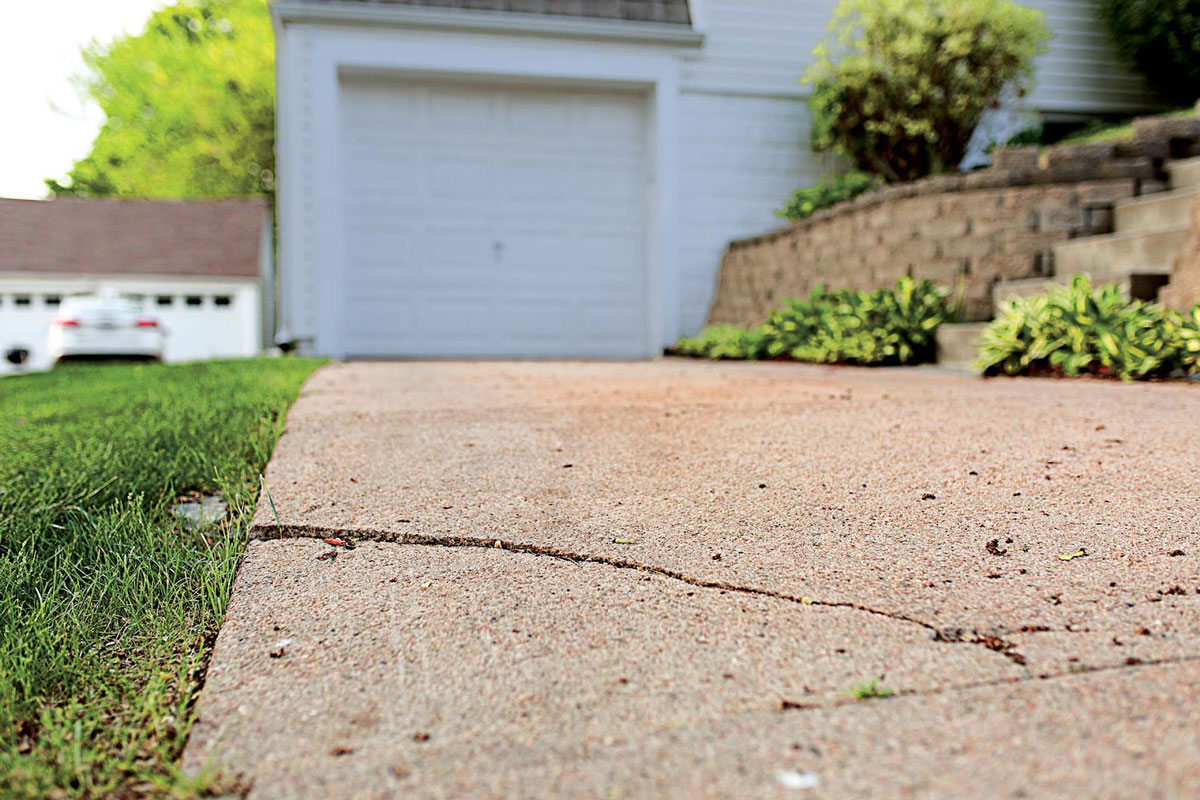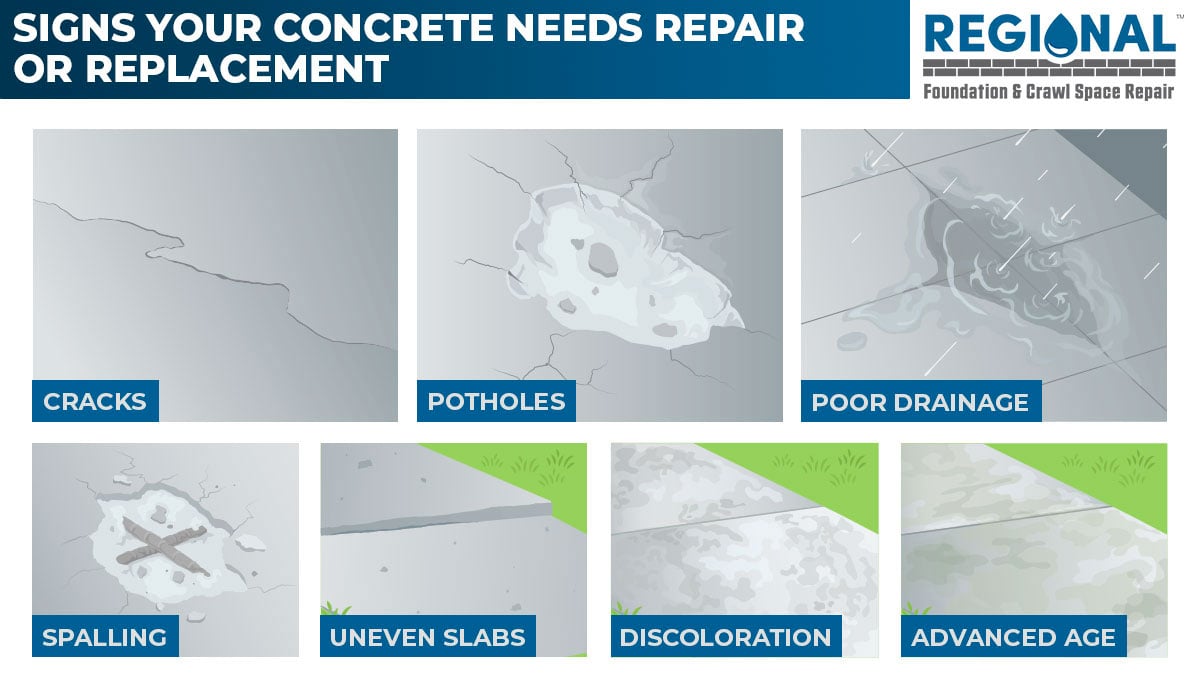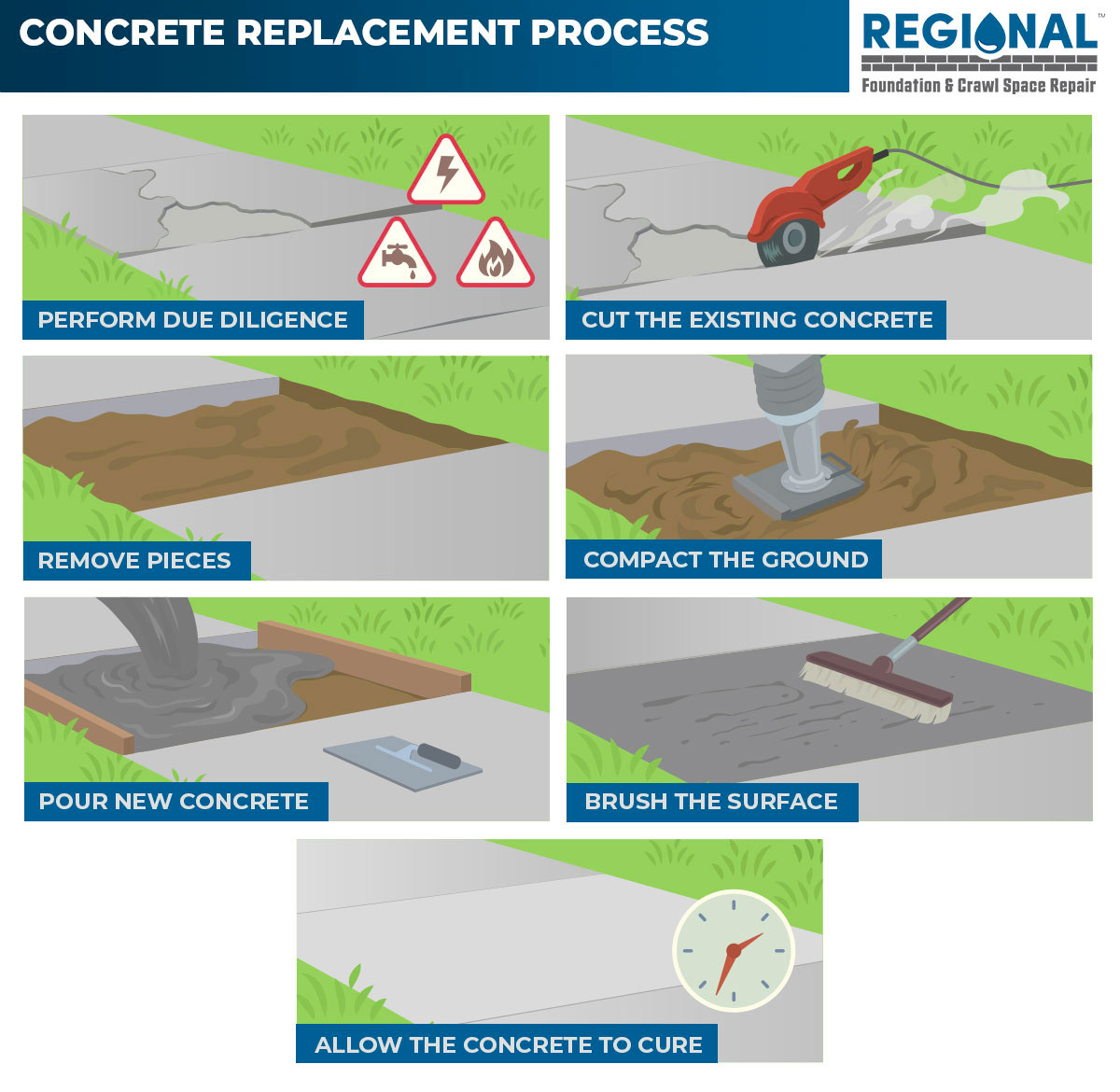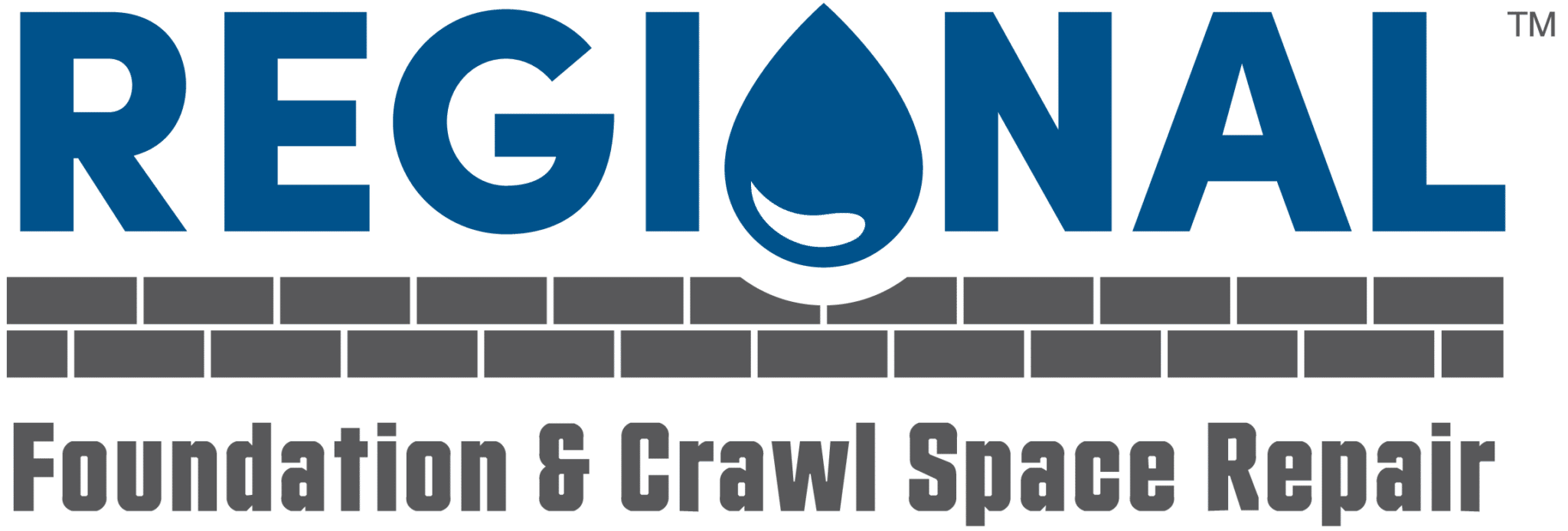Facing the dilemma of repairing or replacing your driveway can be a complex decision for any homeowner. The condition of your driveway is not only crucial for curb appeal but also for the safety and accessibility of your home. In this comprehensive blog post, we will explore the ins and outs of driveway maintenance, breaking down the costs associated with driveway replacement versus repair. From assessing damage to weighing the long-term financial implications, we’ll guide you through making an informed decision that works best for your property—and your wallet. Whether you’re dealing with minute cracks or significant wear and tear, join us as we pave the way to a cost-effective solution for your driveway needs.

Cost of Concrete Driveway Replacement
The cost of replacing a concrete driveway depends on many factors, including the slab’s overall size and your geographical region. However, we can provide a reasonable estimate regarding the price per square foot. On average, it costs about $2 to $6 per square foot to remove concrete and about $4 to $15 per square foot to pour new concrete. Combining those figures and factoring the size of your project should give you a rough idea of how much it will cost in total to replace your concrete driveway.
Cost of Concrete Driveway Repairs
The cost of concrete driveway repair is even more variable than the cost of replacement. This variability arises from the presence of several concrete repair options. Each of these options comes at a different price point. Below is a summary of some of the most common repair methods and what their price is:
- Polyjacking average cost: $5 to $25
- Patching average cost: $1 to $3
- Resurfacing average cost: $3 to $9
As was true regarding replacement costs, the numbers are averages. You’ll need to account for the reason for the damage, the chosen repair method, your geographical region, and the overall size of your project to have an accurate estimate of the total price.
Signs Your Concrete Needs Repair or Replacement
While it’s critical to consider price, it is equally vital to determine whether or not your concrete driveway really needs to be repaired or replaced. The best way to know is to understand the signs of concrete damage. Below are some of the most common ones:
- Cracks
- Potholes
- Poor drainage
- Spalling
- Uneven slabs
- Discoloration
- Advanced age

Noticing one or more signs indicates that you need repair or replacement. Only after confirming these signs can you begin thinking about the cost.
When to Choose Concrete Repair Vs. Replacement
It can be challenging for the average homeowner to know whether repairs or replacement are the best approach. Fortunately, there are a few general ideas to remember when making this decision.
Generally, if you have small amounts of damage or issues localized to a specific section of your concrete, repairs are the better option. Repairs likely resolve these minor issues and are less expensive than a total replacement. By contrast, replacement is a more reasonable option when your concrete has significant, widespread damage. In these cases, replacement may be the better choice despite being more expensive.
Knowing these guidelines helps, but you should never leave this decision to guesswork. Instead, the best approach is to seek the advice of a professional concrete expert in your area. The expert will diagnose your concrete issues and match you to the correct solution.
Concrete Replacement Process
Choosing between repairs or replacements helps to understand what is involved in each process. We’ll begin by explaining the basics of concrete replacement. Whether you are interested in driveway replacement costs or any other form of concrete replacement, the main steps are listed below:
- Perform due diligence: Identify any utilities in the area and the need for local permits before starting this project.
- Cut the existing concrete: Use a strong saw to separate the existing concrete into manageable pieces.
- Remove pieces: Take out the existing concrete and any rebar, mesh, or other supporting sub-structures.
- Compact the ground: Compacting the ground eliminates air pockets, allowing for an even pour and lowering the odds of future unevenness.
- Pour new concrete: Mix and pour a new batch of concrete in place of the old concrete.
- Brush the surface: Brushing before the cure creates a tactile texture that reduces slippage.
- Allow the concrete to cure: The last step is to wait for the concrete to cure. This process can take several days.

Concrete Repair Processes
Now that you know about the main steps in concrete replacement, let’s cover some of the processes involved in the main repair options. Below is a quick description of how the repair choices we mentioned unfold.
Polyjacking
Polyjacking is applicable for concrete slabs that have become uneven for various reasons including erosion, expansive soil, or improper compaction before the slab was poured. Here are the necessary steps:
- Drill small holes in the concrete
- Insert polyjacking material through the holes to fill voids and raise the slab
- Cover the holes with cement
- The slab is ready for use about 15 minutes after the repair is complete.

Polyjacking is not a DIY project. Contact an experienced concrete repair contractor in your area.
Patching
Patching is an excellent option for tiny cracks or holes in your concrete. Here’s how that process takes place:
- Identify the areas that need patching
- Mix cement
- Apply cement to the minor cracks and holes
- Allow the area to dry
Resurfacing
Resurfacing is a fantastic approach when you have widespread spalling or chipping on the surface of your concrete. Here is what that service involves:
- Clean the concrete
- Protect the joints
- Patch minor cracks and holes as needed
- Apply the resurfacer
- Spread the resurfacer
- Brush the surface to create texture
- Allow the area to dry
Get Concrete Advice from an Expert
Choosing between concrete repair or replacement is a difficult chore. Fortunately, this process becomes much easier if you are in contact with a concrete contractor that you trust. An experienced repair team will steer you in the right direction and provide the needed service.
For those who have concrete concerns in Eastern North Carolina, contact Regional Foundation & Crawl Space Repair. Our team has extensive experience repairing and replacing concrete, and we would love to hear from you.

